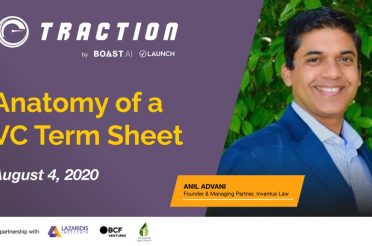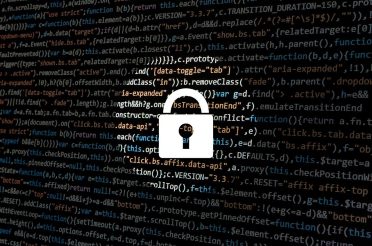The Indian government with the intention of regulating the usage of unmanned aircraft systems (including, model planes, drones, etc.) promulgated the Unmanned Aircraft System Rules, 2021 on March 15, 2020 (“Old Regulations”). However, due to the restrictive nature of the Old Regulations, which received a lot of push back from industry experts as well as civil society organizations, thereafter, the regulatory framework for unmanned aircraft systems was issued by the Directorate General of Civil Aviation (“DGCA”) on August 25, 2021, by way of the Drone Rules, 2021 (“New Regulations”) for legalizing and regulating the operation of unmanned aircraft systems for civil use in India. The New Regulations which shall supersede the Old Regulations was created with the end goal of addressing the regulatory gaps and moving to a liberal approach to explore use cases and supporting the nascent industry.
FAQs on the New Regulations
(as on October 5, 2021)
Q1. Who will the New Regulations Apply to?
A. If you are a person that owns or possesses, or engages in lease, operation, transfer, or maintenance of an unarmed aircraft system (“UAS”), then you will have to comply with the New Regulations.
Q2. Are the New Regulations applicable only to UAS that are registered in India?
A. The New Regulations are applicable to both:
a) UAS registered in India, and
b) UAS operating in and above the geographical territory of India.
Q3. Would I have to comply with the New Regulations if it is above 500 kgs in maximum all-up weight?
A. No, in that case, you shall have to comply with the provisions of the Aircraft Rules, 1937.
Note: The New Regulations cover UAS that can carry up to 500 kg. Whereas, under the Old Regulations, the weight limit for such applicability was 300 kg. With the change in threshold, the government aims to promote payload lifters, commercial use drones and drone-based taxis.
Q4. What are the main categories of UAS described under the New Regulations?
A. The New Regulations categorize of Unmanned Aircraft Systems into the following:
a) Aeroplane: is any power-driven heavier than air aircraft machine deriving support for its lift in flight chiefly from aerodynamic reactions on surfaces which remain fixed under given conditions of flight.
b) Rotorcrafts: is a heavier-than-air aircraft supported in flight by the reactions of the air on one or more power driven rotors on substantially vertical axes.
c) Hybrid UAS: is heavier-than-air unmanned aircraft capable of vertical take-off and landing which depends principally on power-driven lift devices or engine thrust for the lift during the flight regimes and on non-rotating airfoil for lift during horizontal flight.
Q5. What are the sub-categories of the UAS classifications described under the New Regulations?
A. The aforementioned categories of UAS are further sub-categorized as the following:
a) Remotely piloted aircraft system (“RPAS”): This includes a remotely piloted aircraft, its associated remote pilot stations, the required command and control links and any other components as specified in the type design.
b) Model RPAS: These are RPAS which have a maximum all-up weight of 25 kgs, which are used for educational, research, design, testing or recreational purpose only and operated within visual line of sight.
c) Autonomous Unmanned Aircraft Systems: Unlike the Old Regulations, the New Regulations do not define autonomous Unmanned Aircraft Systems. Therefore, the degree of autonomy or threshold that would be required for an Unmanned Aircraft Systems to be considered as autonomous shall be subject to better clarity from the government.
Q6. What are the various classes of UAS under the New Regulations? In the Old Regulations, it was weight-wise, is it the same?
A. Yes, the New Regulations also have a weight wise classification, based upon the maximum all-up weight, including payload, which shall be classified as follows:
a) Nano UAS: Less than or Equal to 250 grams
b) Micro UAS: More than 250 grams, but less than or equal to 2 kilograms
c) Small UAS: More than 2 kilograms, but less than or equal to 25 kilograms
d) Medium UAS: More than 25 kilograms, but less than or equal to 150 kilograms
e) Large UAS: Weighing more than 150 kilograms
Q7. What types of permissions and certifications will I need to obtain under the New Regulations?
A. Under the New Regulations, the primary requirements for a UAS are as follows:
a) Type Certificate (“TC”)
b) Unique Identification Number (“UIN”)
Note: Unlike the Old Regulations, under the New Regulations many clearances are no longer required, including Unique Authorization Number, Unique Prototype Identification Number, Consent Certificate, Maintenance Certificate, Operator Permit, Approval of R&D Institute, Remote Pilot License for Trainee, Approval of Remote Pilot Instructor, Approval for Import of Drone Parts.
Q8. Is the TC mandatory for users of all types of drones?
A. Obtaining a TC is mandatory for all UAS users, except for users Model RPAS and Nano UAS. The activities of manufacturing and importing of UAS, respectively is also exempt from obtaining such clearance in respect of such classes of UAS.
Q9. What is the process of obtaining a TC? Who grants the TC?
A. The application has to be made by filing Form D-1 along with a fee of INR 100 on the digital sky platform located at https://digitalsky.dgca.gov.in/home (“Platform”) The application has to be accompanied with particulars, details and other requisite documents for the prototype UAS along with a submission of a prototype of the proposed UAS.
The standards shall be recommended and prescribed by the Quality Council of India (“QCI”) and the issuing authority shall be the Directorate General of Civil Aviation (“DGCA”) or any other authorized testing agency (“ATA”) by it.
Q10. What are the timelines for receipt of a TC?
A. The QCI or ATA has to submit its test report along with its recommendations to DGCA within 60 days of receipt of the application. Thereafter, the DGCA has to issue the TC for the UAS within 15 days.
Q11. Are there any safety measures that are mandatory under the New Regulations?
A. While the New Regulations do not specify any safety features compliance as of yet, features including:
a) ‘no permission-no takeoff’ hardware and firmware;
b) real-time tracking beacon that communicates the unmanned aircraft system’s location; and
c) geo-fencing capability.
The aforementioned safety features may be notified by the government as mandatory in the near future and each user shall have 6 months’ time to comply with the same.
Q12. Is registration of UAS mandatory?
A. Registration is compulsory for all UAS users, where the Application for registration shall be made in Form D-2 on the Platform along with a fee of INR 100, and details of the user, the UAS and unique number of TC to which such UAS conforms to, as provided by the manufacturer and the unique serial numbers of its flight control module and remote pilot station.
Q13. What is the deadline for existing UAS owners to complete the registration of their UAS?
A. The deadline for applying for a UIN for existing UAS owners under the regulations is currently set at December 30th, 2021.
Q14. Can one transfer, sell, lease, or gift an UAS?
A. Yes, an UAS can be transferred after providing requisite details of the transferor, transferee and UIN of the UAS in Form D-3 on the Platform, along with a fee of INR 100.
Q15. What if a user loses or permanently damages their UAS?
A. The user is required to deregister their lost/permanently damaged UAS, through application Form D-3 on the Platform along with a fee of INR 100.
Q16. Can one fly the drone anywhere? Are there any restricted areas?
A. The map will divide the entire Indian airspace into three zones namely:
a) Green: includes (i) the airspace up to a vertical distance of 400 ft or 120 m for all zones which have not been categorized as red or yellow; and (b) the airspace up to a vertical distance of 200 ft or 60 m above the area located between a lateral distance of 8 kms and 12 kms from the perimeter of an operational airport.
b) Yellow: includes (a) the airspace above 400 ft or 120 me in the designated green zone and (b) the airspace above 200 ft or 60 m in the area located between the lateral distance of 8 km and 12 km from the perimeter of an operational airport.
c) Red: includes areas notified by the Central Government, from time to time, and may include installations, port limits or areas beyond territorial waters of India.
Note: In a notification dated August 25th, 2021, the Ministry of Civil Aviation in consultation with state governments have coordinated and published an interactive airspace map available on the Platform to enable individuals in determining the fly-zone over an area, indicating go and no-go areas for operating UAS, and to plot their proposed flight plan for their UAS accordingly (“Airspace Map”). The Airspace Map will be demarcated as per the Red, Yellow and Green zones prescribed in the New Rules. The permission granted for flying in the respective zones may be obtained through the Platform for end-users.
Q17. What permissions are required for flying UAS in the different zones?
A. There is no restriction on flying in the green zone and it would require merely a self-verification from the pilot. However, for flying in the yellow and red zone, the permission of the Air Traffic Control authority and the central government shall be required, respectively.
Q18. Can the zoning be changed at any point of time?
A. The central government may change the zoning and the changes shall come into effect after 7 days of such an update on the interactive maps.
Q19. Does the pilot have to verify the Platform for any notification or restriction applicable to UAS operations in the intended area of operation?
A. Yes, it is a mandatory requirement.
Q20. Are there any restrictions apart from the zones on flying of the UAS?
A. Yes, there are some restrictions under the New Regulations, they are as follows:
a) No person shall operate an UAS in a manner, either directly or indirectly, as to endanger the safety and security of any person or property
b) No person shall carry or permit to be carried in any unmanned aircraft to, from, within or over India, any arms, ammunitions, munitions of war, implements of war, explosives and military stores;
c) No person shall carry dangerous goods on UAS unless such operation follows the Aircraft (Carriage of Dangerous Goods) Rules, 2003;
d) No person shall operate an UAS in a manner that violates the right of way of a manned aircraft and UAS shall remain clear of all manned aircrafts.
Note: Whether a UAS can be operated in a private area, including housing and residential societies will be up to debate and will require case-law to determine the outcome. Currently, there are no explicit restrictions in the New Regulations.
Q21. What if there is an accident involving the UAS?
A. In case of any accident involving the UAS, the remote pilot of such UAS has to mandatorily notify the DGCA through the Platform of such an accident.
Q22. Does a UAS pilot require a license to operate? What is the process for applying for a UAS remote pilot license?
A. Yes. A remote pilot license is mandatory for operation of an UAS and no individual other than a holder of a valid remote pilot licence enlisted on the Platform shall operate an unmanned aircraft system. However, in case of operating a nano UAS or a micro UAS, for non-commercial purposes such license is exempted.
Q23. Who all are eligible to obtain a remote pilot license? What is the validity period for a license?
A. Any person between the age of 18-65 who has cleared class X examination and received the specified training from any remote pilot training organization can apply for a license. A license is valid for a period of 10 years from the date of issuance.
Q24. What is the procedure for obtaining a remote pilot license?
A. The procedure for obtaining a remote pilot license is to complete the training specified by the Director General and pass the test conducted by an authorized remote pilot training organization. (“RPTO”). After completion of the seven days of successful completion of the training and passing of the tests, the RPTO shall make an application on the platform on behalf of the individual by filing form D-4 along with a fee of INR 100. The RPTO shall thereafter issue a remote pilot certificate through the Platform. Within 15 days of issuance of the remote pilot certificate by the RPTO, the DGCA shall issue remote pilot license to such an individual through the Platform.
Q25. Who can establish a Remote Pilot Training Organization?
A. A RPTO can be established by any person that meets the eligibility criteria of DGCA by filing form D-5 on the Platform along with a fee of INR 1,000. On satisfaction of all the criteria, the DGCA shall issue authorization for establishment within 60 days. This authorization shall remain valid for a period of 10 years.
Q26. Does one need to insure the UAS?
A. Yes, third-party insurance is mandatory to be taken by users of all UAS except nano UAS.
Q27. Are there any exemptions that are granted for research and development?
A. Yes. Research and development entity or an educational institution, under the administrative control of, or recognized by, the Central Government or State Government or Union Territory Administration, any startup recognized by the Department for Promotion of Industry and Internal Trade, an ATA, or a UAS manufacturer having a valid GSTIN, is not required to obtain a TC, UIN, prior permission and a remote pilot license for operating a UAS for research, development and testing purposes.
The government may also exempt any person or class of persons from the New Regulations by way of an order.
Q28. What is the policy regarding UAS traffic management?
A. The Central Government within 60 days of the notification of these rules, publish a framework for Unmanned Aircraft Systems Traffic Management System on the Platform. This framework shall facilitate automated permissions required under the New Regulations and shall include framework for developing corridors for safe and harmless transfer of goods by UAS within and across zones. The framework shall also include powers of the State Governments and Union Territory administrations.
Q29. How does the Government plan to promote UAS through the New Regulations?
A. The Central Government may promote the adoption and use of unmanned aircraft systems by constituting an Unmanned Aircraft Systems Promotion Council, which shall facilitate:
a) development of a business-friendly regulatory regime, including automated permissions;
b) establishment of incubators and other facilities for the development of unmanned aircraft system technologies;
c) involvement of industry experts and academic institutions in policy advice; and
d) organising competitive events involving unmanned aircraft systems and counter-unmanned aircraft system technologies
The Central Government may, after evaluating these rules on the basis of economic impact, prepare a six-monthly report listing the achievements of the Indian unmanned aircraft system sector and the measures taken to further the ease of doing business in that sector.
Q30. What are the penalties prescribed under the New Rules?
A. Yes. Failure to obtain prior permission for flying over yellow and red zone or carriage of dangerous good, arms, ammunitions and explosives would be an offence that shall be cognizable and non-compoundable in nature. Furthermore, the director general or any other authorized officer may levy a penalty of up to INR 1,00,000 for the contravention of the rules in accordance with the provisions of Section 10A of the Aircraft Act, 1934.
The Director General may also cancel or suspend any license, certificate, authorisation or approval granted under the New Regulations in case of non-compliance by a user or entity.
If you have any questions about the above mentioned, please contact Christopher L. Rasmussen, Managing Partner, Inventus Law, PC., at chris@inventuslaw.com or Vivek Balakrishnan, Principal Associate, Inventus Law, India at vivek@inventuslaw.in.
Disclaimer: This Memo is being provided for information purposes only and is drafted entirely on the bases of public resources. Information contained on or made available herein is not intended to and does not constitute legal advice, recommendations, mediation, or counselling under any circumstance. This information and your use thereof do not create an attorney-client relationship. You should not act or rely on any information provided herein without seeking the advice of a competent advocate licensed to practice in your jurisdiction for your particular business.






